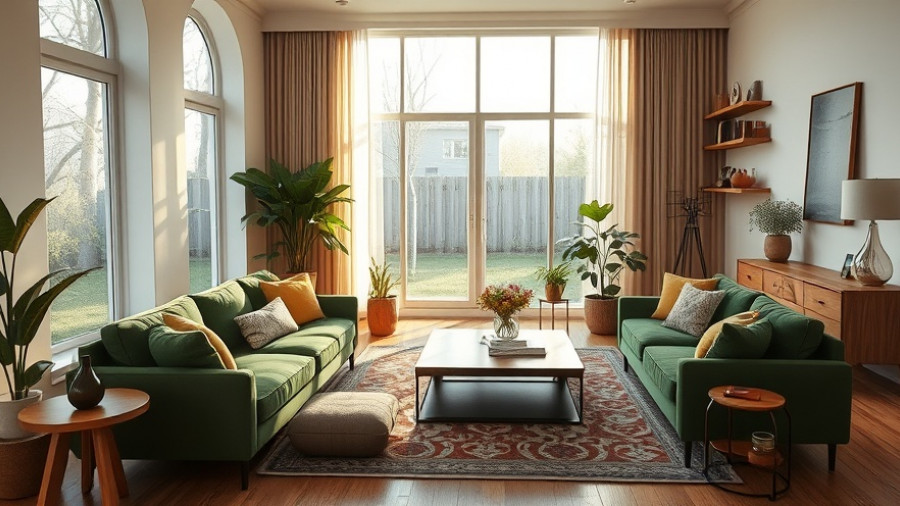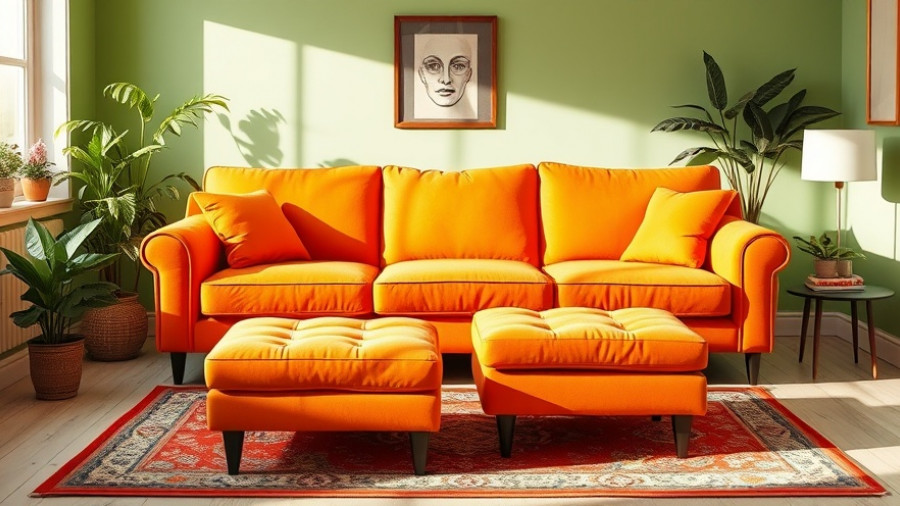
Designing for Comfort and Safety: Key Features for Aging in Place
As we navigate through life's stages, our homes should reflect our evolving needs, especially as seniors increasingly wish to age in place. This is where the design of our entries and hallways becomes crucial. According to architect Thomas Mullally, these spaces serve not only as circulation zones but as vital areas for safe and comfortable movement throughout a home. The right design can mitigate risks and enhance daily living for aging occupants.
Understanding Mobility Needs
Movement is essential for independence, and specifics such as hallway width and flooring material play a major role in safety and accessibility. For instance, a minimum hallway width of 36 inches is recommended to accommodate walkers or wheelchairs. Additionally, choosing slip-resistant flooring helps prevent falls—a common hazard for seniors. Incorporating these dimensions into initial designs can significantly increase a home's usability as the homeowners age.
Emphasizing Lighting Features
Proper lighting is another critical aspect in creating age-friendly entries and hallways. Lighting should be adequate to illuminate paths without causing glare. Using natural light through wide windows or skylights during the day, complemented with LED fixtures for nighttime can greatly improve visibility. Implementing smart lighting solutions, where lights turn on automatically as one approaches, can further enhance safety.
Creating Multifunctional Spaces
Entries and hallways should not only facilitate movement but can serve multiple purposes. Consider incorporating built-in benches for resting or storing shoes and bags. Such features can elevate the functionality of these transitional spaces, making them more than just passageways. Involving specialists in smart home technology can also provide features that simplify daily tasks, enhancing the comfort of aging in place without extensive renovations.
Color and Texture Considerations
Colors and textures play an essential role not just in aesthetics but also in functionality. Light colors can create a sense of openness, while contrasting textured surfaces can serve as visual cues, assisting those with diminished eyesight. It's vital to select non-reflective finishes that don’t blind or disorient. Remember, accessibility doesn’t mean sacrificing style; a beautifully designed hallway can still be functional.
Future Adaptability: Planning Ahead
The concept of aging in place encourages designers to think ahead. Features like wide door frames may accommodate mobility aids later, and lever-style door handles are easier for those with arthritis. Anticipating future needs during the design phase can help avoid costly renovations down the line. Communities, especially in California, should consider offering workshops for homeowners to learn about these features, promoting awareness on preparing homes for aging.
Expanding the Discussion: Local Efforts in California
California homes, known for their innovative designs, are increasingly implementing aging-in-place principles. Many municipalities are initiating programs to assist homeowners in adapting their living spaces. Whether it’s through local rebates for smart home technology installations or accessibility upgrades, there's a push for resources to be available to enhance home safety as we age.
The Bigger Picture: Community and Family Support
While home design is crucial, the emotional impact of aging in place cannot be ignored. Family support systems are essential—ensuring that seniors can rely on loved ones for assistance when navigating through their homes. By fostering community conversations, we can enhance awareness around the importance of thoughtful home design, leading to informed decisions that benefit families.
With all these considerations in mind, it becomes evident that designing entries and hallways for aging in place is both a personal and community responsibility. By addressing these needs proactively, we can create spaces that not only enhance safety but also ensure that individuals can continue to feel comfortable and independent in their homes as they age.
 Add Row
Add Row  Add
Add 




Write A Comment